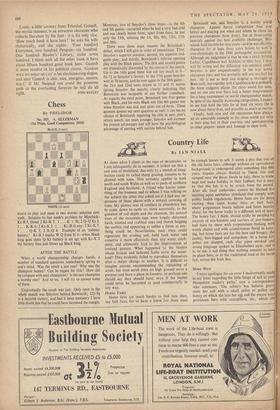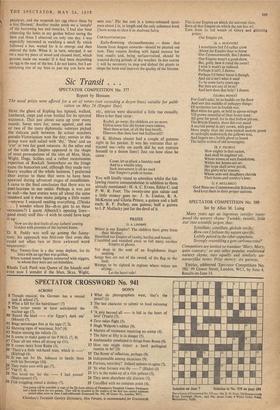MORE BEES
`I must apologise for an error 1 inadvertently made in my letter regarding the little heaps of soil in your Hampshire reader's paths,' says a correspondent, who continues, 'The solitary bee halictus provi- sions her cell with a small pellet of pollen and honey on which she lays her egg and the mason wa.%1) provisions hers with' caterpillars, etc., which she paralyses, and she suspends her egg above these by a tiny filament.' Another reader sends me a 'sample' of the burrowing bee and remarks, '1 had also been observing the holes in my garden before seeing the bees and those I observed on only one day. 1 was especially interested in watching a small fly which followed a bee, waited for it to emerge and then entered the hole. When it, in turn, emerged, it sat on a near-by piece of wood and cleaned itself, which process made me wonder if it had been depositing an egg in the nest of the bee. I do not know, but I am enclosing one of my bees as you say you have not seen one' The bee sent is a tawny-coloured speci- men about 1 in. in length and the only reference book I have seems to class it as A ndrena fulva.
CHRYSANTHEMUMS
Early-flowering chrysanthemums those that bloom from August onwards—should be planted out now. They require feeding with liquid manure for best results and, being surface-rooted, should be watered during periods of dry weather. In due course it will be necessary to stop and disbud the plants to shape the bush and improve the quality of the blooms.































 Previous page
Previous page